| Revista Umělec 2006/3 >> The Crisis of the Discrete Tendency | Lista de todas las ediciones | ||||||||||||
|
|||||||||||||
The Crisis of the Discrete TendencyRevista Umělec 2006/301.03.2006 Václav Magid | studie | en cs de |
|||||||||||||
|
Indication of a Problem
A majority of the works at the recent exhibition Indikace (Indication) operated as discrete modifications of designated environments. This exhibition, which was prepared by the curator Mariana Serranová and held in a run-down former dentist’s office, featured one of the undamaged walls laboriously painted by Zbyněk Baladrán to look like a dilapidated wall. In the next room, Tomáš Vaněk using his usual stencil technique, created duplicates of shadows that perfectly overlapped real shadows created by artificial illumination. The members of the Ládví group installed window boxes with geraniums on all of the windows and made an orientation system on the exhibition floor. These entries were hard to identify as art works because they had a decorative and practical function for the given space. Barbora Klímová slightly altered the color of the tiles so that the variously tinted tiles would as four number figures display different years. Dominik Lang complicated the path between two rooms by dividing the doors vertically into two halves, only one of which would open. Another of Lang’s intervention was a lightbulb suspended from the window of the exhibition space over a street. Installed next to a street light, the extra light would be turned on at the same time. With a project covering small flags by dust and submerging a box of medicine into oil, Jiří David, perhaps unintentionally, achieved a similar invisibility. A video by Vasil Artamonov and Alexey Klyuykov depicts a series of examples of slight adjustments in everyday activities in which the artists secretly carried out useful but illegal activities. All the works described above were interventions into specific spaces based on the principle of slight alterations of otherwise normal arrangements. The discreteness of these gestures seems to be the imperative and the main goal of the creative endeavor, yet without having any clear justification. Artwork that intentionally contradicted the usual purpose of art by trying not to be seen was suddenly not surprising. Instead of problematizing our common way of viewing reality it came off as a common effect of present-day art production. The strategy of subtle shifts in mundane space is typical for the “discrete tendency” that has emerged in Czech art over the last decade. This essay intends to seek out the origins and track the development of this tendency, and to compare it with another related tendency – and to define the aspects of the crisis that this tendency finds itself in. The “Discrete Tendency” in Czech Art The origins of the “discrete tendency” in Czech art date back to the second half of the 1990s at a time when a number of artists, who are now dominant, entered the scene. The curator Pavlína Morganová tried, in a 2005 exhibition called Insiders, to define the characteristics of this era. One might question the fundamental feature of the generation that she defined with the subtitle Nenápadná generace druhé poloviny 90. let (The Unobtrusive Generation of the Late 1990s).The aspect in which the visible distinction between an art work and daily life is blurred only began to play a central role in the work of three of the eleven artists represented in her exhibition (Baladrán, Mančuška, Vaněk) – and only at the conclusion of the era. The “discrete tendency” was only hinted at among the other artists and artificially enhanced in the conception of the presentation. In my opinion, the effort to highlight artists who incorporated formal elements of “discreteness,” disrupted what would otherwise have been a truly representative selection of artists from the generation of “insiders.” The curator consequently could not include a number of important figures such as Josef Bolf, Jan Kadlec, Markéta Othová, Milan Salák, Vít Soukup, and Jan Šerých.1 Were we to require a word to describe the poetics of the generation during the second half of the 90s, I would choose “civic character,” meaning simple art, inconspicuous and grounded to the “local social context and everyday experience.”2 This term cannot only describe the materials selected and formal methods, but also the subject matter. In contrast to the claim that a given generation “characteristically creates objects and installations, post-conceptual projects for a special space and specific situation,”3 we could grant an equal space to painting, spectacular photos or installations if they were topically close to the idea of “civic character.” Despite these reservations, the Insiders exhibition was important because it attempted to characterize the art of the recent past. A description of features typical to the work of “insiders” in the exhibition’s accompanying text addresses all the early indications of the “discrete tendency.” Morganová’s text will serve as an appropriate reference point as I attempt to lay out the broader characteristics of the generation’s work during second half of the 90s, and to distinguish the rudiments of the given tendency. The form of the Czech art from the first half of the 90s corresponded with the country’s ambitions after the fall of the previous political regime. At the same time, it was affected by trends associated with globalization and increasing efforts to compete with mass culture, co-opting its features. This period includes the transformation of galleries, and an attempt to build an art market where the artist is promoted as a competent manager of their own work. Art production as such was affected by neo-conceptual approaches, post-modern identity games, the discovery of the potential of new technology and manipulation with elements of kitsch and mass culture. Features typical to this were multimedia installations and large-format photography. With the withdrawal of capital from the cultural sphere coupled with the dysfunction of Czech art institutions and the failure of new art forms to fulfill expectations, artists from the second half of the decade changed their trajectory. In contrast to the early 90s effort to accomplish globally acceptable art works they turned to their own immediate context and their specific history. Instead of the themes whose essence the previous generation sought to capture through simple metaphors, these later artists concentrated on local stigmas and deviations that they understood well from their own experience. They derived not only their subject matter from these things, but also their means of representation. The subject of artistic work particularly included obsessive practices such as collecting, sewing and DIY. The array of approaches encompassed by the late 90s generation’s civic poetics ranged from two extremes – poles that, for orientation, can be understood as “content” and “form.” The artists that I would categorize in the “content” pole (Pěchouček, Salák, Soukup) concentrated primarily on seeking out specific themes, formative experiences and typical obsessions in order to delineate their own generational and social identity. Their starting point was the conventional easel painting that they developed mainly by integrating narrative elements. This tendency towards narrative was associated with numerous allusions to the personal and everyday dimension of post-normalization era when the generation was formed. These artists gave priority to the depiction of peculiarities in the local social space. In contrast to this, the artists representing the “formal” pole (Mančuška, Vaněk) focused on working with new means of expression intended to be rooted in local space as deeply as possible. In lieu of representing the mundane they concentrated on creating art through mundane means. They thus departed from traditional art media and began to formulate new creative methods influenced by everyday activities in which they applied commonly used objects and accessible cheap, affordable materials. Thematically they stayed with the essential form of the standard inventory of objects found in the social environment (walls, chairs, cups, plugs…) and concentrated primarily on constructing various strategies for entering this space. They gradually began to work with a principle followed by some of them to this day: a simple shift in the choice of the material, in the method of processing, in function or in placement that unsettles the viewer about the ontological status of what is seen. Ján Mančuška worked first with common household materials (toothpicks, cotton pads, threads) as building material for an artwork; later, he began to create objects that are difficult to identify on the border of real things (a chair, a house) and their depiction or imitation. With his array of “particips” for specific places and situations, Tomáš Vaněk created multiple variants of illusionary doublings or simulations of real functional objects (bells, switches, hooks). Zbyněk Baladrán, in his exhibition Hobby in the Jelení gallery (2001), perfected DIY as an art method with a series of non-functional and instable constructions not unlike the modular furniture of Ikea. Here, we can see that the tendency towards the strategy of minute shifts in mundane space was originally motivated by a renewed focus on local social contexts, and an effort to bring the means of art representation and everyday activities closer together. From this point onwards, I shall define art that builds on this strategy as the “discrete tendency” of the present day Czech scene. Although this tendency sprung from artists that in my schema belong to the “formal” pole of late 90s civic art, I don’t associate it with specific people but rather particular features found in the works of various artists. Moscow “Non-Spectacular Art” and the Critique of Representation Similar methods that were used by many Czech artists around 2000 later appeared in presentations of what is known as Moscow non-spectacular art (2001-2002). The ideas of Anatoly Osmolovsky, the key figure of this movement who became known in the Czech scene in 2002, were integral in assisting the “discrete tendency” in artists’ self-consciousness in the context of the opposition tendencies in contemporary art. Osmolovsky offered an attractive interpretation of the relation between art, power and the entertainment industry, arguing that the only effective alternative to mass culture is a strategy identical to the Czech “discrete tendency.”4 Moscow non-spectacular art’s theoretical starting point is the analysis of capitalist society as formulated by Guy Debord, the leader of the Situationist International, in his work “Society of the Spectacle” (1967). Debord’s postulate, which Osmolovsky takes over, can be summed up in few sentences. Contemporary society is defined by the accumulation of spectacle. Overproduction and the total power of images alienates us from our everyday experience. Our life is not experienced directly, but mediated through pictures. To be real means to be seen; the society, whose life is limited to a contemplation of its own representations, remains in permanent presence and cannot create history. The counterpart to the transparency of social life is the opacity of the power hidden behind the structure of representation modulated by advertisements, mass media, propaganda and the entertainment industry. In a society that is completely subordinate to the circulation of goods, the possibilities of self-realization are exhausted by consumption. One aspect of the spectacle is its ability to readily recuperate any attempts toward an alternative social model or self-reliant reflection. As independent art initiatives become absorbed by the system, they consequently lose their critical intensity. They go commercial and become a new form of entertainment through which the system pacifies the masses, dissuading them from any attempt at critical self-consciousness. Osmolovsky sees this as the fate of all art strategies typical to the 1990s. The artists who ironically appropriated the signs of mass culture in order to subversively enter its territory – or tried to face mass culture with an even stronger escalation of shock and monumental visuality – became pop-stars who satisfied the media’s demand for non-conformity. Biennial exhibitions – the predominant way to present contemporary art that decade – became a part of the entertainment industry alongside film festivals and TV variety shows. Osmolovsky formulated a general conclusion based on the spectacular appropriation of 90s critical art strategies. Every critique using mechanisms of representation that serve as a means of oppression in the given society is internally incoherent, because it confirms the legitimacy of these mechanisms. A direct critique of society – one that seeks to compete for media space with official doctrines – must overtake the language of advertising and propaganda; in the end it reinforces the power of media and what it represents. From this, Osmolovsky deduces that a critical opposition that wants to insure against being appropriated by the spectacle must replace a direct critique with a model of an indirect “fluid” critique. Art is supposed to cease competing with the entertainment business and must develop its own “asymmetrical answer.” It has to back off into a space that won’t be transparent to the media, and must create a specific language of forms that is distinct from the language of advertising and the entertainment business. Critical aspects of art expression should thus shift from the level of content to the level of form – of inner configuration. Consequently, the application of the Debordian critique of spectacle upon late 90s art production implies a return to the modernist formalist strategies. Osmolovsky’s delimitation of formal methods for what he calls non-spectacular art is from a negation of the fundamental features of the spectacle. For a society that is completely under totalitarian influence by images, the only possibility for art is to abandon representation. Art is not supposed to create new images but to perform shifts in reality. Non-spectacular artworks consist of subtle shifts that are barely distinguishable from the actual mundane. In comparison with traditional ways of viewing exhibitions, in which we passively consume objects set into a framework that pre-defines that these are artworks, the reception of non-spectacular works demands that the viewer engage with the work more actively. They must explore the exhibition space in search of these shifts that might be artistic intervention. Osmolovsky presents this form of art reception as an elementary form of critical and political activity. An ideal “viewer – activist” uncovers inner contradictions of reality when they find out that what they see is in reality not what it seems to be. So they uncover the construction hidden behind the neutrality of the mundane. We can see that Osmolovsky’s description of non-spectacular art strategies perfectly fits the examples of Czech attempts at discrete interventions into everyday space. Whereas the Czech artist’s use of these methods was a logical result of previous art practice, the Moscow non-spectacular movement was a product of speculations. It was an artificially created art movement whose program arose through a combination of Osmolovsky’s reflections on Debord and his visits to international exhibitions of contemporary art. The circle of the representatives of this movement was limited to the founder and the young up-and-coming artists who worked under his direct influence. As such, it is understandable that Moscow non-spectacular art was short-lived. The artists, whose creative activities didn’t transcend the servile fulfillment of this theoretical program, were unable to further develop that given strategy, and it exhausted as a result. Not Too Distant Similarities The origins of the “discrete tendency” in Czech art and in Moscow’s “non-spectacular art” differ, but aspects of the movements’ respective strategies do coincide. Perhaps it is possible that for every work in one movement an analogy can be found in the other. To be sure, the works of Czech artists tend to be usually wittier, more poetic, less descriptive, better worked out, more numerous, and spread over a greater period of time; but the principles, on which they were built, form explicit analogies to the works of the Russian artists. Here are a few examples. Whereas David Ter-Oganian managed to smuggle the shadow of a non-present person between the shadows of real people with the help of a projection, Tomáš Vaněk creates artificial shadows of objects by spraying them through stencils. Alexey Kallima started enlarging cigarette boxes by 1cm a few years after Jiří Skála made rulers 3 mm shorter. The ESCAPE group set one false pillar into a row of true ones a few years before Dominik Lang started making duplicates of real walls, floors, stairs, and thresholds. ESCAPE sequentially increased the height of benches in a row by placing wooden planks underneath them; Lang glued felt to chair legs so that they would lose their stability. Similar artificial interior defects can be found in Osmolovsky, who presented in a 2001 exhibition a section of a parquet floor deliberately bent upwards, as well as in Baladrán’s imitation of a damaged wall from this years’ Indikace (Indication) exhibition. In search of analogies, we needn’t limit ourselves to the artists who are normally linked with the “discrete tendency” in Czech art. Tatyana Hengstler put a little stone into a glass window; the Podebal group affixed a brick into the glass door of the National Gallery. There is a similarity between the Radek community’s action Hunger Strike with No Demands and the Rafani group’s action Demonstrace demokracie (A Demonstration of Democracy). The participants of the first action went hungry for a few days without explaining what they wanted. The participants of the second action burned a black and white imitation of the Czech flag in public, were detained by the police and released because it was not clear what they were attacking. In both cases, the form of political protest was disconnected from any specific content. The historical background through which we could look for examples of the same strategy can be stretched further into the past and into various geographical locations. We would find out that artists used minute shifts in the mundane every time their activities were associated with narrow, informal societies and with small, unofficial spaces. That was the rule throughout the 90s and already in this decade there have been attempts by to incorporate this practice in large exhibitions. Appropriation It is easy to attack Osmolovsky’s conclusion that discrete interventions into the mundane should present critical opposition to the society of the spectacle. It is problematic to identify the spectacle and visuality of Guy Debord’s original concept. Debord’s use of the notion of “spectacle” does not correspond with the “spectacularity” of the contemporary media of representation, but is an allegory of late capitalism as a particular historical socio-economic formation. The passages in “The Society of Spectacle” where Debord expresses the necessity to destroy representations are meant mainly rhetorically. 5 The film work of Guy Debord shows that he didn’t consider the non-spectacular or anti-spectacular strategy as a negation of the media of representation but as a “detournement” of usual ways of its reception. As a consequence, the abandonment of the image promoted by Osmolovsky is in reality not a reaction to the oppression of spectacle, but a delayed statement about the general crisis of representation undergone by art since the 90s. Osmolovsky describes this crisis very well when he speaks about the impossibility of competing with mass culture in the field of visuality – traditional art means that have been appropriated by the entertainment industry. As we can see, not even the non-spectacular art, which abandoned the image in favor of shifts in the mundane, offers anything that mass media cannot seize. In fact, the propagation in mass media of this artwork’s ideology existed before its mechanisms were first shown in exhibitions. The strategy that Osmolovsky offers under the label of non-spectacular art is in fact nothing new. As Viktor Misiano says, its aesthetic was already widespread in the art of the 90s and advertisements as well. It’s based on putting emphasis on a single impressive maneuver, the slight shift, a joke not apparent at first glance. The participation of the viewer is exhausted by the task of finding the joke. Art built on this simple principle is thus “always quickly read, quickly exhausted and quickly appropriated by any system.”6 These observations are valid for all cases where shifts in the mundane are used, and also for the “discrete tendency” of Czech art. Practical experience from Czech exhibitions helps to rebut the speculative theses of non-spectacular art such as the model of a “viewer-activist.” Viewer detective work – the act of searching for artists’ interventions in gallery space – soon becomes a stereotypical activity that requires little intellectual or critical effort. Thus, neither Moscow’s “non-spectacular art” nor the “discrete tendency” of Czech art developed any revolutionary art strategies. This practice of tiny shifts in the mundane that both movements work with is a well-known aesthetic principle of contemporary art. As soon as theoretical arguments and local styles – that in all individual cases justify the tendency towards a given principle – lose their importance, the triviality and shabbiness of the principle is revealed. I experienced myself the moment of this strategy’s alienation and appropriation by the spectacle of the official art system at the opening of the International Biennale of Contemporary Art – Druhý pohled/Second Sight at Prague National Gallery’s Veletržní palác (June 2005). The artist Avdey Ter-Oganian, an important mediator between the Moscow and Prague scene, performed an action (in collaboration with Display Gallery) intended to disrupt the otherwise calm course of the exhibition’s vernissage. It was planned that dozens of visitors wearing casts on their legs would be scattered among the attendees. Only those who noticed the multiplicity of this banal phenomenon would have realized that it was an artistic manipulation. As a participant in this intervention, I noticed two things: there were not only members of the Prague art community participating; there were also representatives of the Moscow non-spectacular movement involved. But the two groups did not communicate with each other at all. They were unable to maintain the intended community character of the action that relied on friendly cooperation to confront a common enemy – the system of art institutions. People walking through Veletržní palác with their leg in a cast did not create the impression of disturbing the operation of the institution, but easily mingled in the carnival atmosphere of the opening. They disappeared among other performers who brightened the space of the exhibition, such as a couple who stopped and applauded in front of every piece or a couple wearing artificial moustaches. During the closing meeting on the roof of the gallery, where we could enjoy the view of Prague with other guests, even the fiercest opponents of National Gallery Director Milan Knížák’s show must have realized that they had become part of it. The Canonization of the “Discrete Tendency” and the Signs of the Contemporary Crisis Around 2002 the “discrete tendency” in Czech art began to become formalized and institutionalized. The artists, who founded this movement in the late 90s, at this time became the most successful of their generation. Thanks to their participation with new institutional initiatives in Czech art such as PAS, Display and Tranzit they found closer links with international art. The “discrete tendency” then disengages from the community and became part of a wider exchange of artistic values. Specific projects, activities and strategies, bound together with the local social milieu, now had the opportunity to travel abroad where their original meanings were generalized, simplified and alienated. A good example is the Bezhlavý Jezdec (headless rider) window-box, which functioned for a few years as an exhibition space on Dělnická st. in Prague-Holešovice. In 2002, the PAS group (Produkce aktivit současnosti – Production of Present Day Activities – Havránek, Skála, Vaněk) sent the window-box to the Art-Kliasma festival of contemporary art in Russia. Whilst the object functioned in its local context (in Prague) as an alternative framework for the presentation of young artist’s artwork when it was exported to the Russian show, it was presented as an art work. Thus, what had been its own self-contained locus (the window box) was torn from its previous context in order to serve as an entrance ticket into the global contemporary art scene. Responding to the change of context, these artists have departed from where they had begun, in the civic character of the 90s, and began to concentrate on the formulation of their own approaches within the divergent position of world art. The old general concepts taken over from the immediate local experience were replaced by theoretical constructs reflecting newly achieved self-realization in the international community. An illustration of the change in rhetoric can be seen in difference between a headline – Vít Havránek’s article about Ján Mančuška’s 2000 exhibition, which is called “DIY on the Rise” (Umělec Magazine 2000) – and the title of a manifesto written by the critic and artist together in 2004 – “Revolution in Asynchronous Space.”7 A canonical mosaic of conceptual abstractions was created around the concept of “discrete tendency” – ephemerality, minimum of art, immediate context, fluidity, asynchronicity, asymetry, permanent critique, constructed and arbitrary history, postproduction. Some of these notions are derived from a discussion of the 90s, especially from the texts of Jana and Jiří Ševčík; others arose as a reaction to concepts of international artists and critics including Nicolas Bourriaud and Anatoly Osmolovsky. At the same time a standard canon of art strategies and features of work were established through which progressive elements of the Czech scene could be identified: intervention into the surroundings, the creation of new projects for specific site or situation, work with a minimum interval reachable with a shift, multiplication or simulation of elements of a common reality, purposeful aesthetics, the use of cheap materials, balancing on the border between art, design, architecture and non-artistic activities, the process of the work, anchoring in the local social context, mimicking of the methods of sociological research and analysis, cooperation with specific social groups, infiltration into public and media space, connecting to conceptual and minimalist tendencies of the 70s. We can recognize as a central motif of these strategies the good old principle of minute shift in the mundane. These conceptual abstractions and canonic strategies function as magic formulas through which the contemporary Czech art milieu recognizes itself. At the same time, as the concept of the Insiders exhibition shows, they determine the hindsight to the recent history of Czech art. The actual thinking about art in the Czech Republic (including that of the author of these lines) is largely reduced to the use of a set of general notions developed by the “discrete tendency.” The hegemony of this tendency in the Czech scene is confirmed by the fact that we apparently have no better concepts to describe our expectations from new art at this moment. The constancy of this conceptual formula is connected to the retardation of the general development of art – which automatically returns to established methods. This could be seen at the recent Indikace (Indication) exhibition. Mariana Serranová, in the curatorial text for the exhibition writes: “how can we protect ourselves against the omnipresent manipulation of our society by media images and mechanisms? One of the solutions offered by conceptual art is a refusal of its strategies and a reduction to economical forms.” 8 This is a perfect description of the concept of “a symetrical reaction,” which was a topic of discussion among some members of local art community under the influence of Osmolovsky. As the exhibition Indikace confirmed, the dogma of the contemporary Czech art could be identified with the the fundamental definition of non-spectacular strategy: “It is necessary to make shifts in mundane reality.” That said, the local context offers its own genealogy for this approach. Recently, the canonical figure of the Czech art scene has become (through no fault of his own) Jiří Kovanda, who already in the 70s was working with minimal shifts in mundane reality. His action Divadlo (Theater) was more than two decades ahead of the paradigmatic work Kino (Cinema) of Pawel Althammer, which occured in 2000 at Manifesta 3. Althammer’s action consisted of an intervention into city life in which actors were hired to play normal people for a few days. The art manipulation could be recognized only when a viewer came to the same place on another day and noticed that the action was being repeated. Kovanda stood in 1977 on Wenceslas Square, Prague, and carried out simple physical activities in a prescribed sequence. Only in longer observation could one detect that he had a given scenario. A summary of contemporary exhibition concepts and attempts to delimit an actual state of Czech art could be simply stated: young artists don’t have to do art; it is sufficient to refer to Kovanda’s action. Very likely they would repeat the same ideas in their projects anyway. A Missing Alternative The monotony of new art in the Czech Republic is given by the fact that the “discrete tendency” lacks any equal opponents. It is not just that the persistent and long-term critics of this tendency were unable offer any perspective alternative, but they weren’t able to identify it properly. Their error is that they have tended to identify this tendency with the minimal trends associated with exhibition installation of the sort seen at venues such as the Display gallery. Thus they mix up two aspects of visuality that exist for entirely different reasons. The “discrete tendency” presents a formalist approach that stresses the discrete intent of art objects; the dry form of contemporary installations works with the conceptual and documentary projects whose statements are nearly independent from the form of their presentation, and as such they need the material aspects of the presentation to draw as little attention as possible. As I sought to demonstrate in this article, I do not consider the problem of the “discrete tendency” stemming from an underestimation of visuality; the problem is that this tendency perpetuates the stale strategy of minor interventions in the mundane. Suggestions for how to get over the hegemony of “discrete tendency” usually build on the mechanical negation of their alleged or real features. As a result, they resuscitate the artefact – the visual side of art presentation – in effort to address the mass viewer. While conservative opponents of the “discrete tendency” don’t see anything in it other than a false refusal of visuality, their effort to fight against this tendency is generally a negation of a negation. This can be seen in the concepts utilized by their arguments: the newly introduced “spectacularity” is a mirror inversion of “non-spectacularity,” while the conservative “výtvarno” (artistry) probably expresses a nostalgia for the good old days when Czech art had no need to confront the international art context and global mass culture and medium. In the conception of the exhibition Věcné stavy (The States of Things),9 I tried to get away from the shadows of conceptual abstractions such as the mundane or “immediate context,” with an emphasis on the concrete as a unifying feature of various approaches of the present-day young generation. Despite the effort to present a wider spectrum of artistic expressions, the exhibition impresses one as dominated by works built on the established principle of minute shifts in the mundane as is typical with the “discrete tendency.” 10 As such, the critique of this exhibition as “regional” was reasonable. The idioms that I used to formulate my conception smoothly fit the repertory of the canonical concepts of contemporary Czech art whose state is under the influence of the “discrete tendency.” 1 It should be stated that the most radical iconoclastic project in the Czech scene was presented by Milan Salák’s initiative, “Don’t Exhibit in 2001.” 2 Morganová, Pavlína: “Insiders – nenápadná generace druhé poloviny 90. let” in: Insiders catalogue Dům umění města Brna, Futura gallery, 2005, p.4. 3 Ibid, p. 4. 4 While describing the theory and practice of the Moscow “non-spectacular art” I refer to my article “Image is for Nothing – Listen to Osmolovsky! Moscow Non-spectacular Art 2001-2003” in: Korpus, no. 3, 2004, pp.14-21. 5 Levin, Thomas Y.: “Dismantling the Spectacle: The Cinema of Guy Debord. ‘Ciné qua non’: Guy Debord and Filmic Practice as Theory.” www.medienkunstnetz.de/themes/art_and_cinematography/debord/. 6 “Нонспектакулярность: доктрина или созерцание” – discussion including artists Lev Evsovich, Oleg Kulik, Bogdan Mamonov, Anatoly Osmolovsky, Vladimir Salnikov and Moscow Art Magazine Editor Viktor Misiano, in: Moscow Art Magazine, no. 43/44, 2002, pp.75-79. 7 Havránek, Vít; Mančuška, Ján: “Revoluce v asynchronním prostoru,” in: Korpus, no. 3, 2004, pp.22–23. 8 Serranová, Mariana: Exhibition press release for Indikace, presented at the festival 4+4+4 dny v pohybu, Jungmannova 21/30, 2006. 9 Karlín Studios, Prague, 2006, Curator Václav Magid. 10 I disagree with some critics’ observations about the dry tendency to use inexpensive materials in the exhibition. This was derived from the appearance of the installation and overlooked the diversity of tendencies presented.
01.03.2006
Artículos recomendados
|
|||||||||||||
|
04.02.2020 10:17
Letošní 50. ročník Art Basel přilákal celkem 93 000 návštěvníků a sběratelů z 80 zemí světa. 290 prémiových galerií představilo umělecká díla od počátku 20. století až po současnost. Hlavní sektor přehlídky, tradičně v prvním patře výstavního prostoru, představil 232 předních galerií z celého světa nabízející umění nejvyšší kvality. Veletrh ukázal vzestupný trend prodeje prostřednictvím galerií jak soukromým sbírkám, tak i institucím. Kromě hlavního veletrhu stály za návštěvu i ty přidružené: Volta, Liste a Photo Basel, k tomu doprovodné programy a výstavy v místních institucích, které kvalitou daleko přesahují hranice města tj. Kunsthalle Basel, Kunstmuseum, Tinguely muzeum nebo Fondation Beyeler.
|







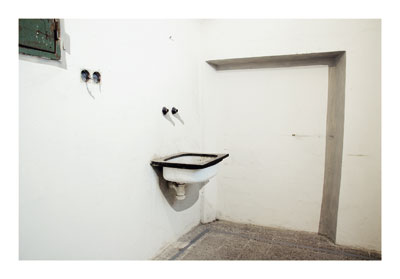
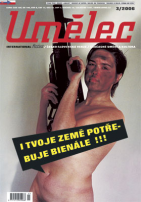




















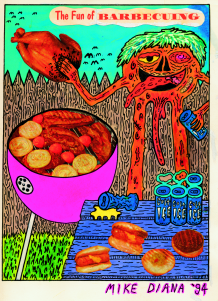




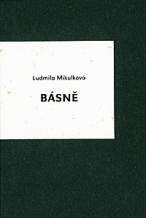
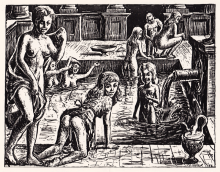
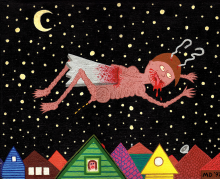
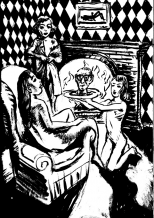


 New book by I.M.Jirous in English at our online bookshop.
New book by I.M.Jirous in English at our online bookshop.
Comentarios
Actualmente no hay comentariosAgregar nuevo comentario